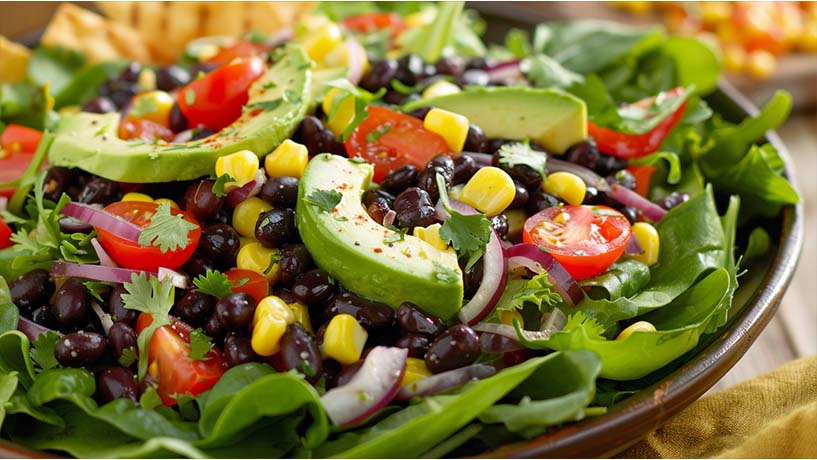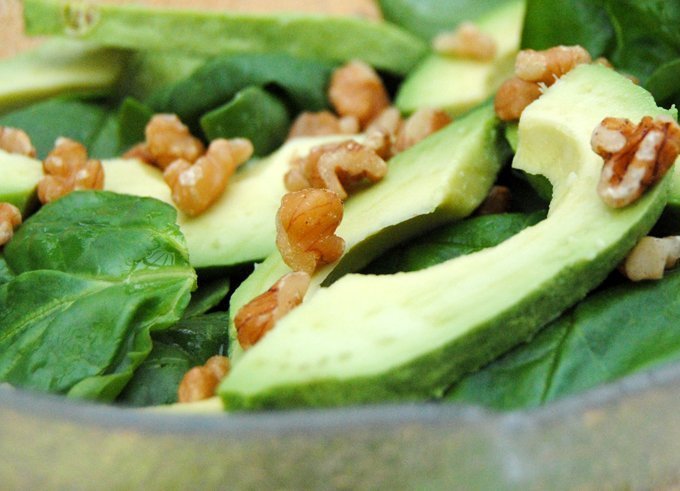I’ve jumped on a lot of health trends in my life. Some stick, most don’t. But smoothies—especially green smoothies—felt like one of those habits that had to be good for you. I mean, you’re blending kale and spinach and fruit. That’s got to be better than skipping breakfast or grabbing a muffin, right?
At least, that’s what I thought. Until I came across a video titled “Are Green Smoothies Bad for You?” And that made me pause.
It reminded me of when I got really into juicing. Everyone said it was the holy grail of energy and detox. I bought the juicer, stocked up on celery and beets, and went all in. But then two things happened:
- Cleaning the juicer made me dread the whole process.
- I started wondering: What about all that pulp I’m throwing away? Am I losing something important?
Turns out, I might’ve been. Like with beta carotene in carrots—we used to think the nutrient alone was the magic. But research later showed that beta carotene supplements didn’t replicate the benefits of eating a whole carrot. There’s something powerful about consuming food as nature designed it.
So now, when it comes to smoothies—especially green ones—I’m asking better questions. Are they really a smart way to flood your body with nutrients? Or is there more complexity hiding beneath the health halo?

🥦 Why Green Smoothies Seem So Healthy
On the surface, green smoothies check every box. You’re getting fruits and vegetables. You’re keeping the fiber (unlike juicing). You’re skipping processed snacks. What’s not to love?
Compared to juicing—which strips away all the pulp and fiber—blending feels like the smarter, more complete option. Instead of tossing the parts your body actually needs for digestion and blood sugar balance, smoothies preserve them.
That’s part of what pulled me in. It felt like I had finally found a health trend that made sense. Real food, minimal processing, and easy to drink on the go. Some days, it was the only way I got in any greens at all.
But just because something has vegetables in it doesn’t automatically make it a superfood. It’s what we combine, how much we consume, and why we’re drinking it that determines whether it helps—or hurts.
🥴 But Are They Too Good to Be True?
This is where it gets uncomfortable. That video—Are Green Smoothies Bad for You?—raises the kind of points most of us don’t think about while sipping something that looks like wellness in a glass.
Let’s start with one word: oxalates.
Spinach, chard, and even beet greens are high in them. When consumed in large amounts—especially raw and blended—oxalates can contribute to kidney stones and interfere with calcium absorption. So if your go-to smoothie is a daily spinach bomb, there may be risks over time.
Then there’s blood sugar. Even with fiber intact, a smoothie that leans heavily on banana, mango, pineapple, or dates can still spike glucose. Yes, it’s natural sugar. But it’s still sugar—and drinking it blended can make it easier to overconsume without feeling full.
Another issue the video touches on is nutrient competition. When you dump a dozen “healthy” ingredients into a blender, your body doesn’t just absorb them all perfectly. Some nutrients cancel each other out. Some interfere with digestion. More isn’t always better.
It’s not that green smoothies are inherently bad. But the belief that more greens = more health isn’t always true—especially when consumed daily, in excess, or without awareness of the ingredient interactions.
🧪 What the Research and Experts Say
The truth about green smoothies—like most nutrition debates—isn’t black and white. It lives in the nuance.
Take the beta carotene example: for years, we assumed it was the superstar antioxidant in carrots. But studies showed that when scientists gave animals or humans just beta carotene supplements (without the full carrot), the health benefits didn’t hold up. Why? Because nutrients work synergistically. They perform better in the context of real, whole food—not as isolated compounds.
The same principle applies to smoothies. When you blend whole produce, you’re getting fiber, water, polyphenols, vitamins, and other co-factors all together. That’s a major improvement over juicing, which strips out the fiber and alters how your body processes sugar.
Fiber, especially, is key. According to Harvard Health, fiber not only slows digestion and helps prevent blood sugar spikes—it also supports gut health, lowers cholesterol, and keeps you full longer. Green smoothies, when balanced, deliver that.
But “balanced” is the keyword. Experts like Dr. Rhonda Patrick and Andrew Huberman have both discussed the importance of variety in plant intake, the downsides of eating the same greens daily (e.g., oxalate buildup), and the need to pair smoothies with protein or fat to reduce glucose spikes.
🎥 Watch this for a deeper breakdown:
I highly recommend the video that got me rethinking all this: Are Green Smoothies Bad for You?
It explains oxalates, blood sugar, and nutrient overload in a super clear way. Worth 10 minutes before your next blend.
So, science doesn’t say “green smoothies are bad.” It says: don’t oversimplify them.
🚫 When Green Smoothies Aren’t a Good Idea
Just because something has spinach and banana in it doesn’t mean it’s automatically healthy. There are real situations where green smoothies might not serve your body the way you expect.
1. When They Replace Real Meals—Too Often
Green smoothies can be nutrient-dense, but they’re not magic. Drinking them instead of eating a full meal (especially without protein or fat) might leave you hungry an hour later, craving snacks, or spiking your blood sugar repeatedly throughout the day. Over time, that can mess with your energy and metabolism.
2. When They’re Overloaded with Sugar
Some green smoothies are basically fruit juice in disguise. If you’re throwing in two bananas, a handful of dates, pineapple, mango, and apple juice, that’s a sugar bomb—even if it’s “natural.” Too much fruit, even blended with greens, can lead to insulin spikes and energy crashes.
3. When You Have Kidney or Thyroid Issues
If you’re prone to kidney stones or dealing with thyroid imbalances, be cautious with ingredients like raw spinach, kale, and beet greens. They’re high in oxalates and goitrogens, which can interfere with nutrient absorption or contribute to kidney stress when consumed daily in large amounts.
4. When You Never Change Up the Ingredients
Smoothies can be a trap for repetitive eating. Using the same base—say, spinach, banana, and almond milk—every day might lead to nutrient overload in one area and deficiencies in another. Your body thrives on variety.

💡 Smart Ways to Make a Healthier Green Smoothie
The goal isn’t to ditch green smoothies altogether—it’s to make them smarter. Here are some easy ways to upgrade your blend without losing the convenience or taste:
✅ 1. Balance Fruit with Greens
Try a 2:1 ratio of vegetables to fruit. Think spinach or zucchini as your base, and add just enough banana or mango for sweetness—not the whole fruit basket. A frozen avocado slice can also add creaminess without a sugar hit.
✅ 2. Add Protein or Healthy Fat
This slows digestion and helps prevent blood sugar crashes. Add a scoop of clean protein powder, a tablespoon of chia seeds, hemp hearts, or a spoonful of almond butter. It makes your smoothie more satisfying and more balanced.
✅ 3. Rotate Your Greens
Spinach every day isn’t the flex you think it is. Swap in romaine, arugula, kale (lightly steamed), or even herbs like parsley to reduce oxalate buildup and increase micronutrient diversity.
✅ 4. Skip the Juice Base
Use water, unsweetened almond milk, or green tea instead of fruit juice. You get hydration without the sugar overload.
✅ 5. Don’t Overload the Blender
More isn’t always better. Keep it to 5–6 whole ingredients max. You’re not making a compost pile—you’re making a meal.
💡 My Go-To Blender:
I’ve been using the Blendtec Total Blender for years. It powers through frozen veggies like nothing else and makes a silky-smooth drink without wrecking the motor.
If you’re serious about smoothies, it’s worth the investment.
🧾 So… Are Green Smoothies Good for You or Not?
Here’s the honest answer: it depends on how you make them—and how you use them.
Green smoothies can absolutely be good for you. They’re a convenient way to get more fiber, micronutrients, and hydration—especially on busy mornings. But they’re not a shortcut to perfect health, and they’re not immune to the same issues that affect any other food trend: overconsumption, overcomplication, and oversimplification.
If you’re using smoothies as a way to add more real, whole food to your life without depending on them for every meal—or trying to “detox” your way out of an unbalanced diet—they can support your health in real, sustainable ways.
But if you’re sipping the same spinach-banana blend every day, spiking your blood sugar with five kinds of fruit, or relying on them as your sole source of nutrition? That’s where the downsides start to creep in.
In the end, your body knows better than any influencer or nutrition trend. Pay attention to how you feel. If a green smoothie energizes you, keeps you full, and fits into a balanced day of eating—keep it. If it makes you crash or bloated or hangry an hour later, adjust. No blender required.
❓Green Smoothie FAQ
🥤 Can I drink green smoothies every day?
Yes, but switch up your ingredients! Rotating your greens (spinach, kale, romaine, etc.) helps avoid oxalate overload and ensures a wider range of nutrients.
🕒 When is the best time to drink a green smoothie?
Morning or post-workout is ideal—your body is primed to absorb nutrients, and the fiber helps stabilize energy throughout the day. Just pair it with protein or fat to stay full longer.
⚖️ Are green smoothies good for weight loss?
They can be, if they help you feel full and replace more calorie-dense meals. Just watch the fruit-to-veggie ratio and skip the juice bases to keep sugar low.
🧃 Is it okay to use fruit juice in my smoothie?
Technically yes, but it defeats the purpose. Juice adds sugar without fiber. You’re better off using whole fruits or low-sugar bases like water or unsweetened nut milk.
🧬 What should I add to make my smoothie more balanced?
Try protein powder, Greek yogurt, chia seeds, hemp hearts, nut butter, or even tofu. These additions help stabilize blood sugar and turn your smoothie into a real meal.




